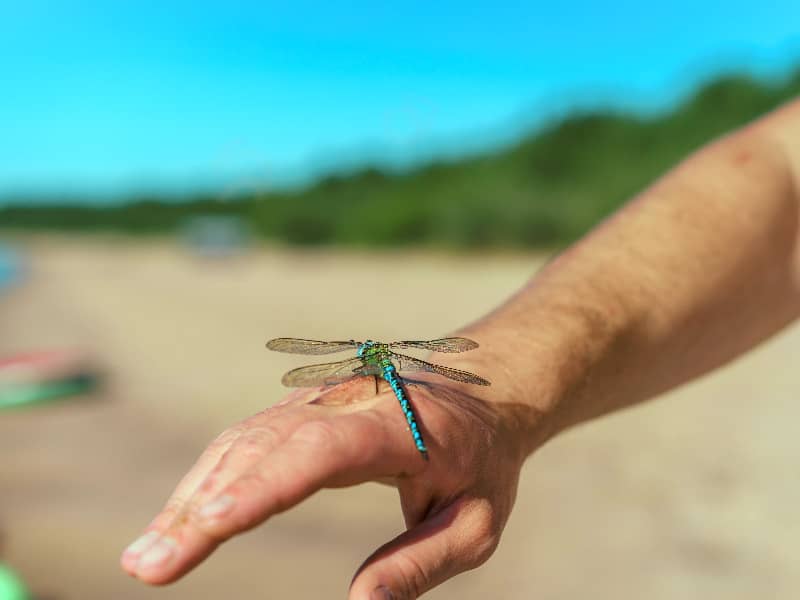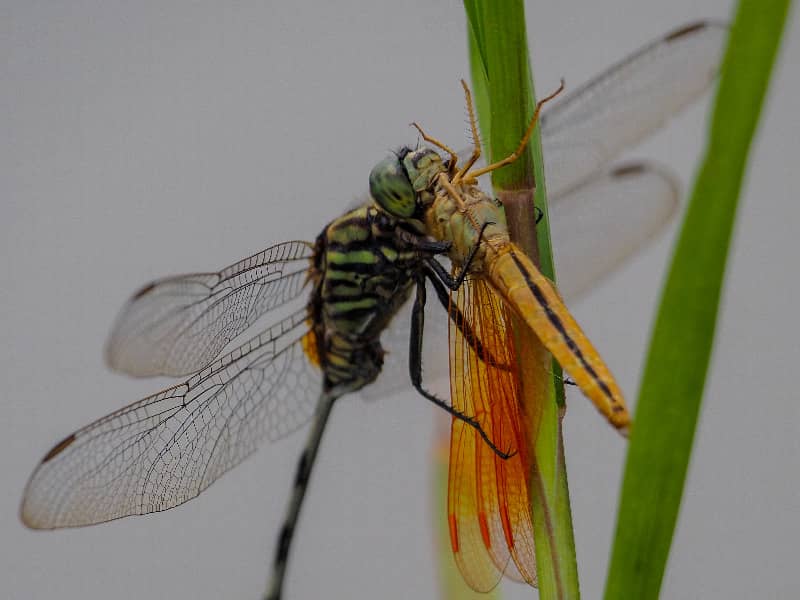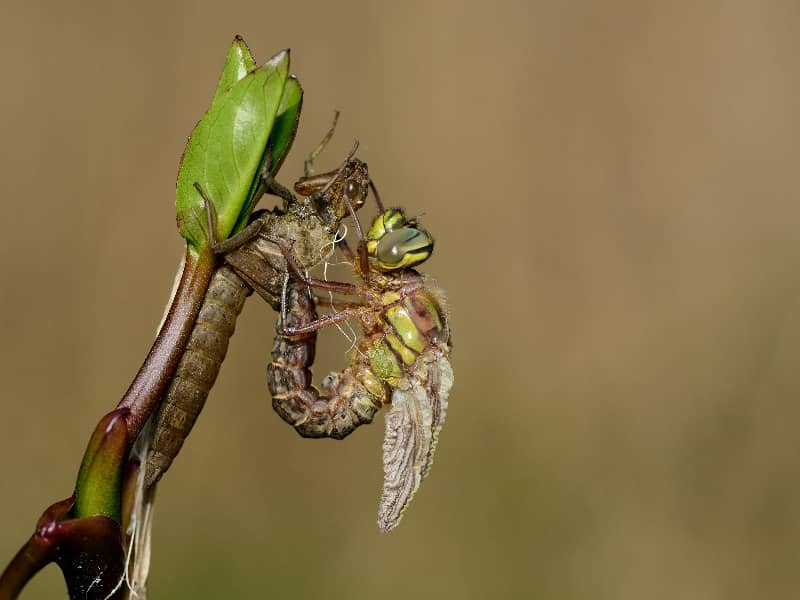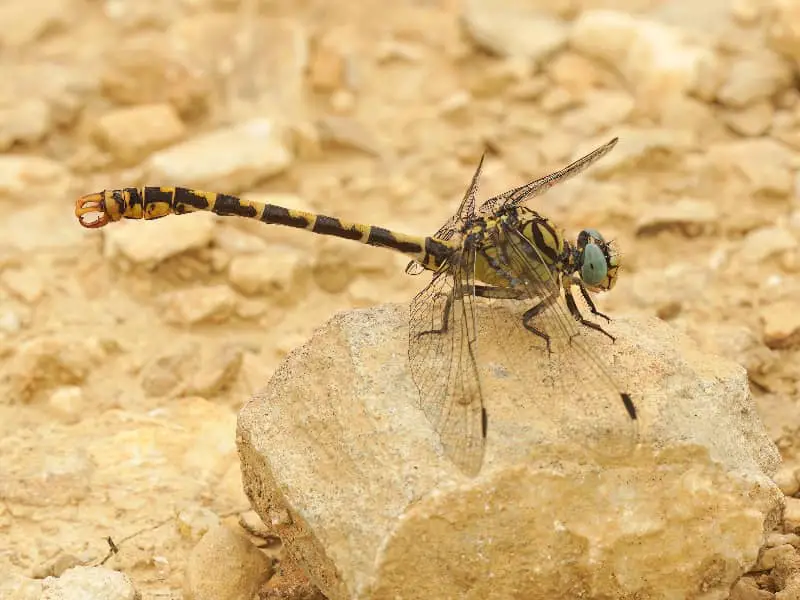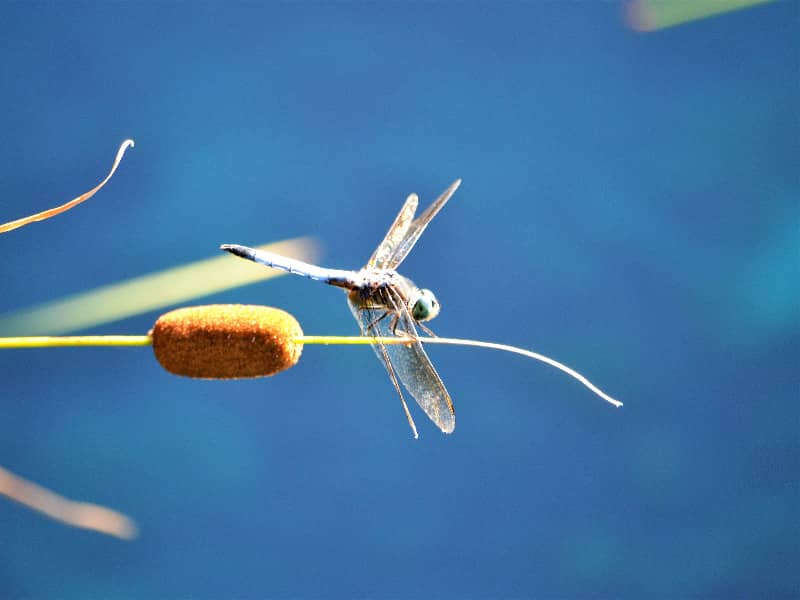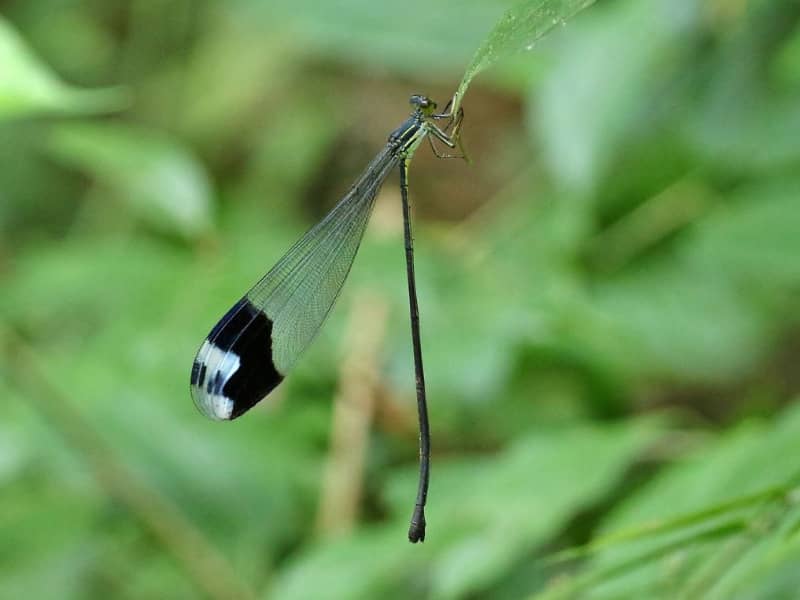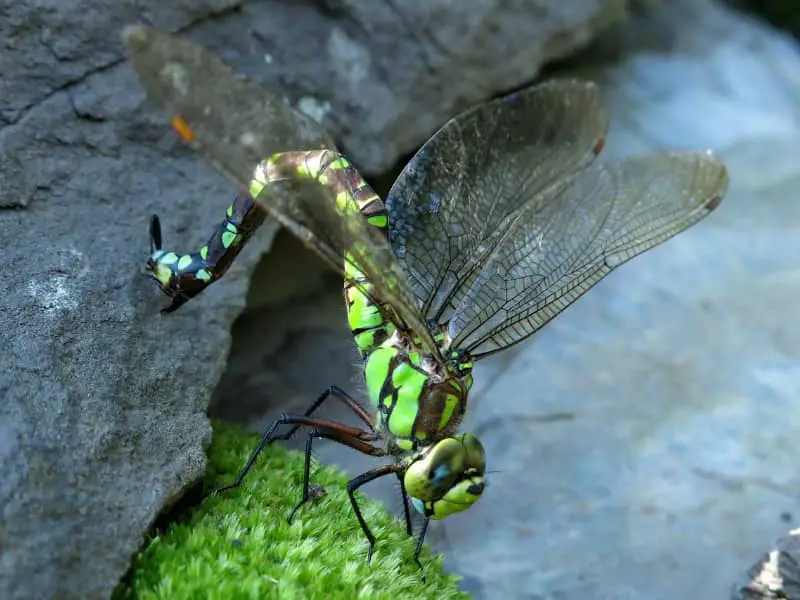
Blue green mosaic damselfly
DiNature is home to a multitude of fascinating creatures, some of which are true jewels. The blue-green mosaic damselfly is undoubtedly one of these jewels. With its stunning color combination and unique appearance, it is one of the most beautiful Dragonfly species. In this article we will look at the blue-green mosaic dragonfly and examine its physical characteristics, habitat, behaviors and its importance to the ecosystem in more detail. Let's dive into the fascinating world of the blue-green damselfly!
- Blue green mosaic damselfly
- Physical characteristics of the blue-green mosaic dragonfly
- Habitat and distribution of the blue-green mosaic dragonfly
- Life cycle and behavior of the blue-green mosaic dragonfly
- Importance of the blue-green mosaic dragonfly for the ecosystem
- Threats and conservation measures for the blue-green mosaic dragonfly
- Interesting facts about the blue-green mosaic dragonfly
- Recognition and identification of the blue-green mosaic damselfly
- Conclusion: appreciation of the beauty and importance of the blue-green mosaic damselfly.
- FAQ
Physical characteristics of the blue-green mosaic dragonfly
The blue-green mosaic damselfly is distinguished by its striking appearance. Its body is slender and long, and its wings are glassy. The wingspan varies between 6 and 8 centimeters, which makes it a medium-sized dragonfly species. The wings of the mosaic dragonfly are covered with a filigree pattern of blue-green spots, which has earned it the name "blue-green mosaic dragonfly".
The head of the mosaic damselfly is strikingly large and its large, multifaceted eyes give it excellent vision. It has a long, thin abdomen that swings elegantly back and forth in the air. Its legs are delicate and covered with hairs, giving them a furry appearance.
Habitat and distribution of the blue-green mosaic dragonfly
The blue-green mosaic damselfly is found in various parts of the world, especially in Europe and Asia. It prefers waters near forests, such as lakes, ponds and slow-flowing rivers. The larvae of the mosaic damselfly develop in water and need clean, stagnant or slow-moving water to survive.
Because the blue-green mosaic dragonfly is dependent on a particular environment, it is not evenly distributed throughout its range. In some regions it is rarely found, while in other areas it is numerous. The availability of suitable habitats and water quality play a crucial role in the population of the blue-green damselfly.
Life cycle and behavior of the blue-green mosaic dragonfly
The life cycle of the blue-green mosaic dragonfly consists of several stages: egg, larva, pupa and adult dragonfly. The egg is laid in water and the larvae hatch after some time. The larvae live in the water and feed on small insects and other aquatic organisms. They go through several molts before developing into the pupa.
The pupal period lasts a few weeks, and finally the adult dragonfly hatches from the pupa. The adult mosaic dragonfly spends most of its life in the air, flying near bodies of water. It feeds on small insects that it catches during flight. The mosaic damselfly is an excellent hunter and uses its sharp eyes and quick flight maneuvers to catch its prey.
Importance of the blue-green mosaic dragonfly for the ecosystem
The blue-green damselfly plays an important role in the ecosystem. As a predatory insect, it helps keep the population of other insect species under control. By regulating insect populations, the mosaic damselfly helps maintain ecological balance. Moreover, it also serves as a food source for other animals such as birds and fish.
The presence of the blue-green damselfly in a water body is often considered an indicator of its good water quality. Because it is sensitive to pollution and environmental changes, the presence of a healthy population of the mosaic damselfly can indicate an intact ecosystem. Therefore, it is important to protect and preserve mosaic dragonfly habitats. For more information on the importance of dragonflies as bioindicators, see. here.
Threats and conservation measures for the blue-green mosaic dragonfly
The blue-green mosaic dragonfly, like many other dragonfly species, is affected by various threats. Habitat loss due to urbanization and agriculture, pollution of water bodies and climate change are some of the main threats to the mosaic damselfly. Various measures are needed to ensure the protection of this fascinating dragonfly species.
Conservation measures include preserving and restoring habitats, improving water quality, raising public awareness of the need to protect the mosaic damselfly, and conducting scientific studies to understand its habits and needs. It is important that governments, conservation organizations, and the public work together to ensure the protection of the blue-green mosaic dragonfly.
Interesting facts about the blue-green mosaic dragonfly
- The blue-green mosaic damselfly can reach speeds of up to 30 kilometers per hour.
- It can fly in both sunlight and shade and adapt to different lighting conditions.
- The males of the mosaic damselfly are territorial and defend their territory against other males.
- The life span of an adult mosaic damselfly is usually only a few weeks to a few months, depending on environmental conditions.

Recognition and identification of the blue-green mosaic damselfly
The blue-green mosaic dragonfly is relatively easy to recognize and identify due to its unique appearance. The blue-green spots on its wings are a characteristic feature that distinguishes it from other dragonfly species. Their slender body and nimble flying style are further clues to their identity.
If you want to identify the blue-green mosaic dragonfly, look for a slender, long body with clear wings and blue-green spots. Also note the size of the dragonfly, as the blue-green mosaic dragonfly is a medium-sized species. With a little practice and attention, you can easily spot this fascinating dragonfly.
Conclusion: appreciation of the beauty and importance of the blue-green mosaic damselfly.
The blue-green mosaic dragonfly is undoubtedly a delicate jewel of nature. Its fascinating colors and unique appearance make it one of the most beautiful dragonfly species. Besides its beauty, the mosaic dragonfly also plays an important role in the ecosystem by regulating the population of other insects and serving as a food source.
It is of great importance to protect and preserve the habitats of the blue-green mosaic dragonfly to ensure the survival of this fascinating dragonfly species. By protecting the mosaic dragonfly, we contribute to the preservation of biodiversity and preserve a piece of nature that continues to enchant us with its beauty and grace.
FAQ
Question: Is the blue-green damselfly an endangered species?
Response: Threats to the blue-green mosaic damselfly vary by region and environmental conditions. In some areas it is endangered, while in others it is abundant. However, it is important to protect their habitats and minimize threats to this species.
Question: How can I help protect the blue-green damselfly?
Response: There are several ways to help protect the blue-green damselfly. You can work to protect water bodies by participating in clean-up events and improving water quality. You can also create semi-natural gardens that provide habitats for the mosaic damselfly. Likewise, it is important to educate the public about the importance of protecting the mosaic damselfly.
Question: Are there other species of mosaic damselflies?
Response: Yes, there are several species of mosaic damselflies that differ in appearance and behavior. The blue-green mosaic dragonfly is just one of them. Each species has its own unique characteristics and plays an important role in the ecosystem.
Author
Last posts
- 15. March 2024ChickensRobuster Kunststoffzaun für Hühner – Tipps
- 13 October 2023DragonfliesBlue feather damselfly
- 12 October 2023DragonfliesYellow dragonfly - What are the species?
- 12 October 2023DragonfliesEarly Adonis Damselfly

